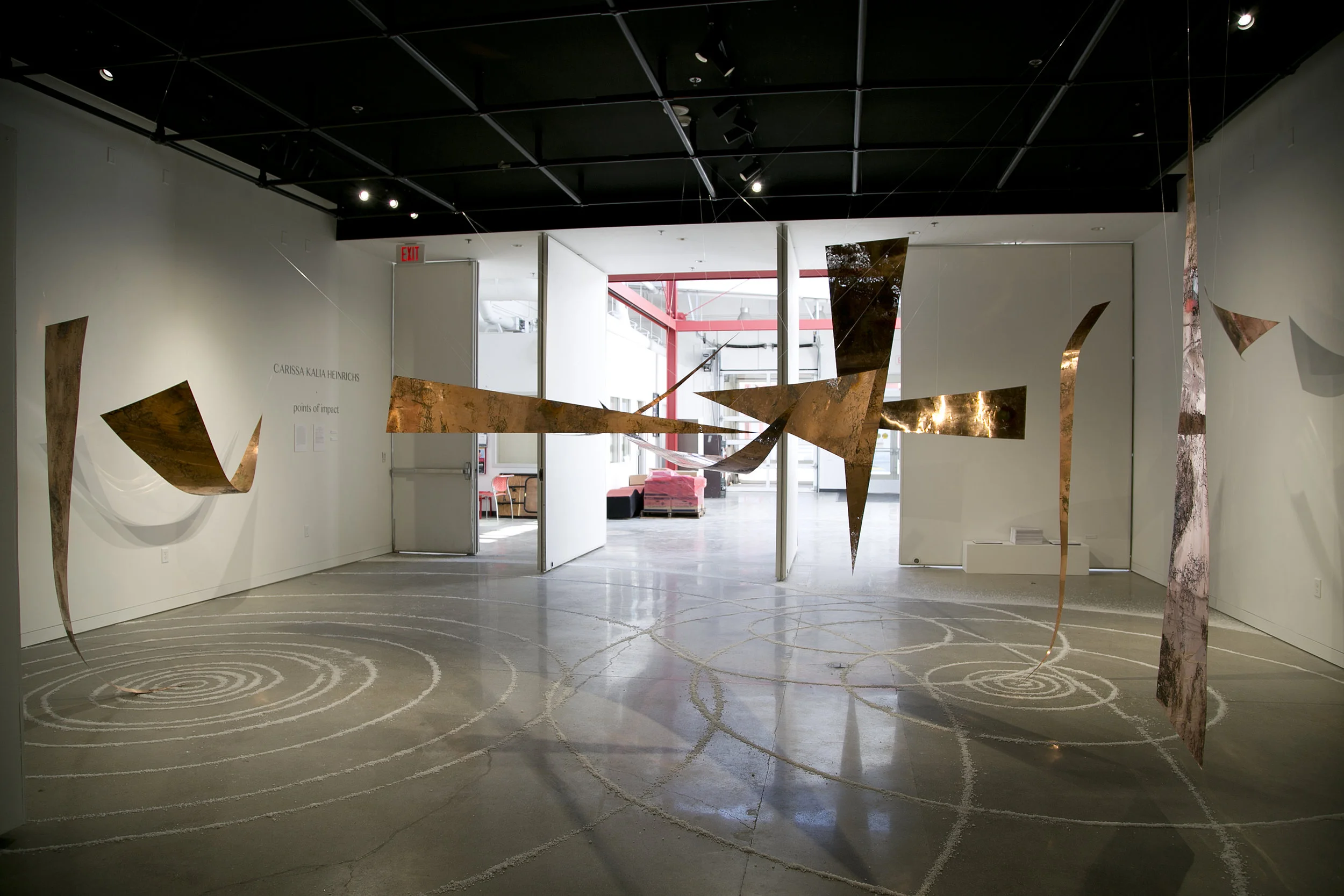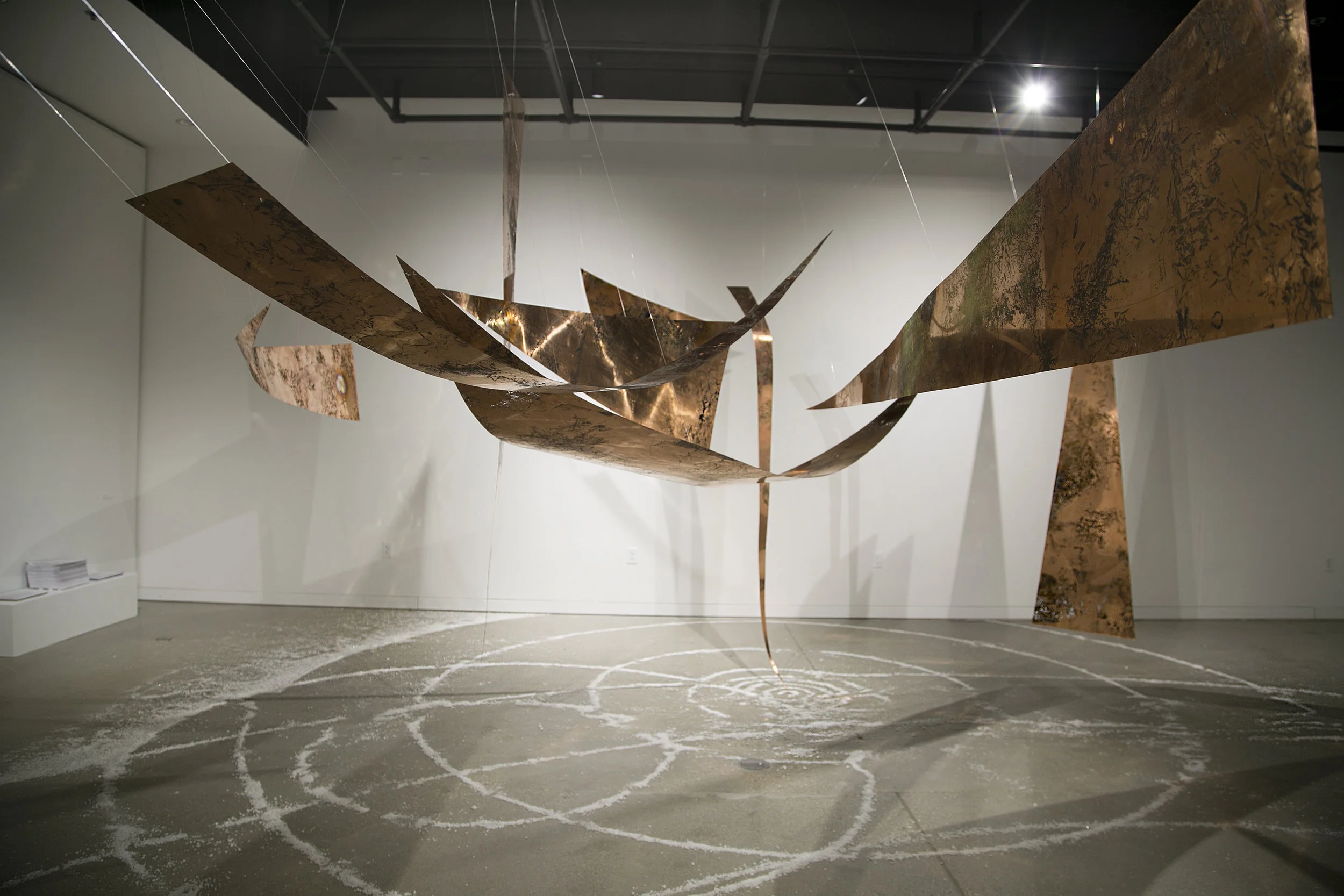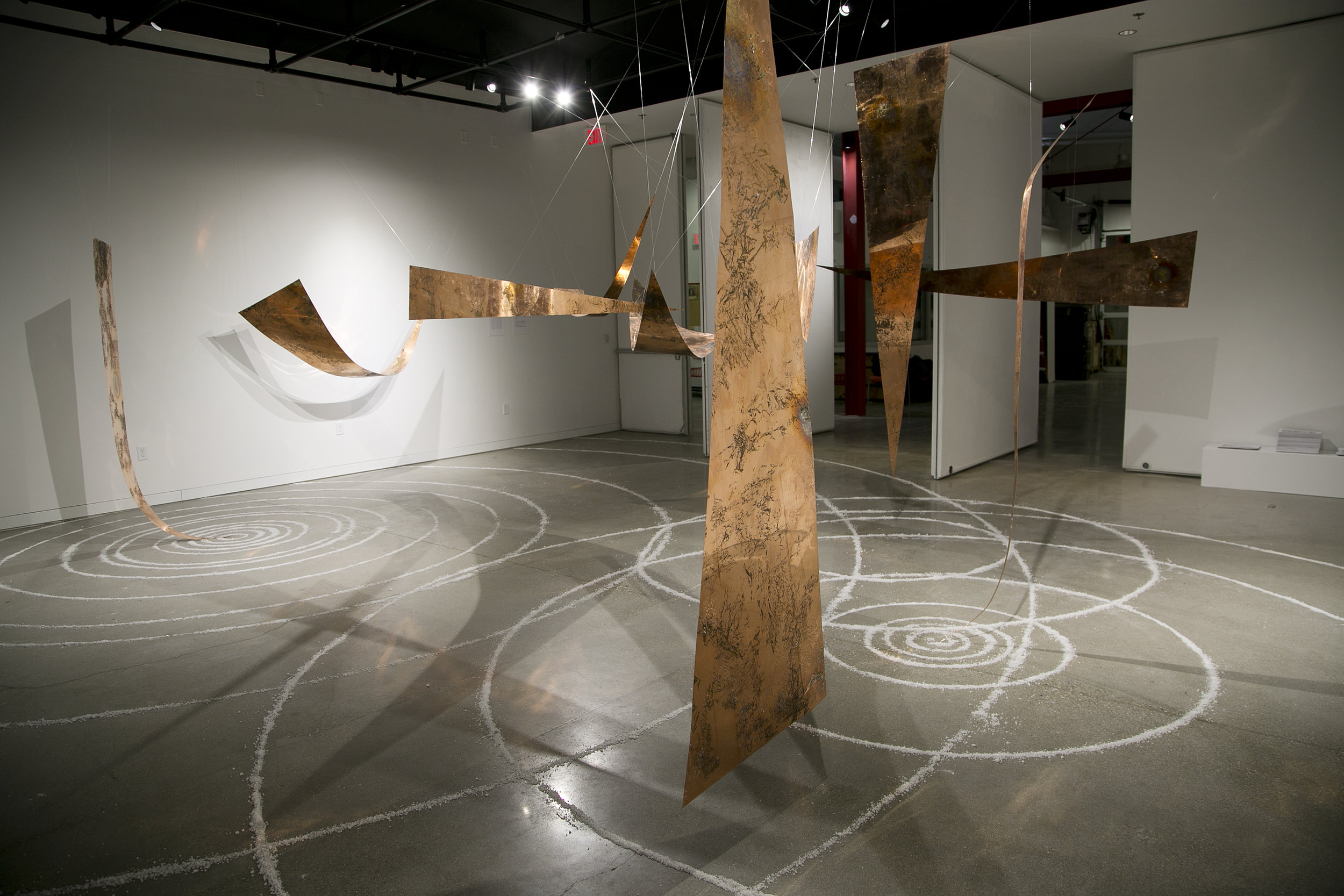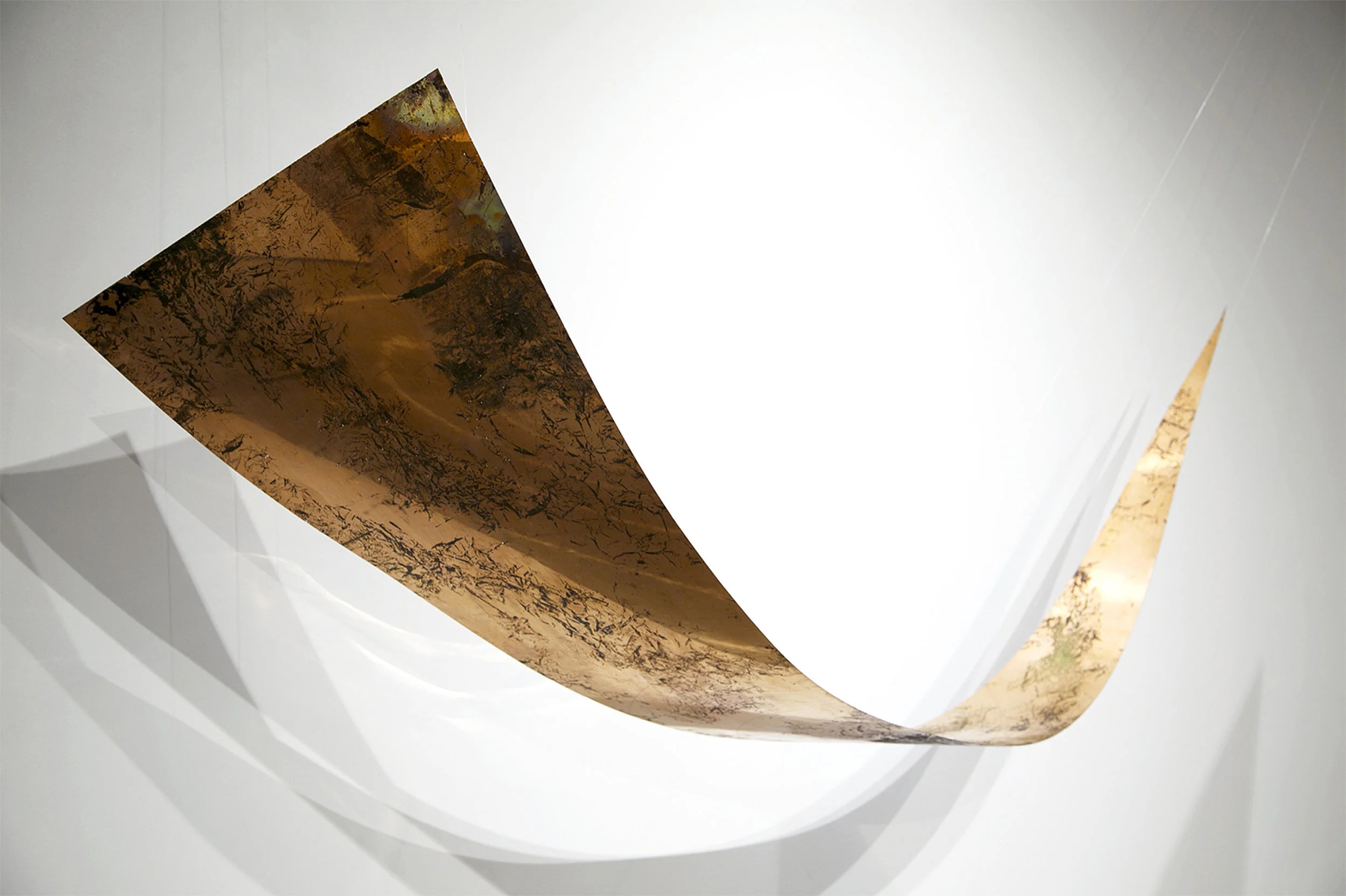Points of Impact
Points of Impact examines intersecting epicenters of collective tragedies and destabilized place identities, exploring degrees of impact through distance, contact, and time. A disruptive event, such as a natural disaster or human conflict, can encompass an entire region, transforming the location in a direct physical sense alongside more insidious and uncertain reverberations. Onlookers straining to assess damage from shifting scales of detailed to summarized accounts often source the place and its inhabitants as evidence of the event in attempts to comprehend its magnitude.
The repetitive application of etching and burning copper from both sides with a mixture of satellite photos, traced material topography, and radiating circular centers serves both as representation and reenactment of a place made unrecognizable. In compiling this shared visual format amongst places spanning the globe that have experienced recent events of distinct upheaval (including Syria, Mexico, and Puerto Rico), I am questioning the methods in which we try to qualify or quantify another person’s pain. I’m interested in the fragmentary nature of a witness-based knowledge to a person or place exhibiting damage. A satellite image presents the error that occurs in surveying a location from a distance, as the photographs intermittently reveal and misrepresent their transformation. As the imagery on the two sides of the plates deteriorate into progressed contact with one another, their overlap creates voids through the center. As heat touches the surface, it mutates the color of the material upon its place of impact, along with its alternate side. Like the unreliability of a bruise, the extension of harm caused by a single event remains ever allusive to trace.
Points of Impact presents a question of the transference between personal experience of a local traumatic event and the determination interpreted by outside observers of its significance.
Points of Impact.
Double-sided screenprint with sugarlift, double-sided etched roofing copper (burnt and oxidized in sections), salt, and data- sets on office paper
11 triangular sheets cut from 2’x8’ sheets
2018
















